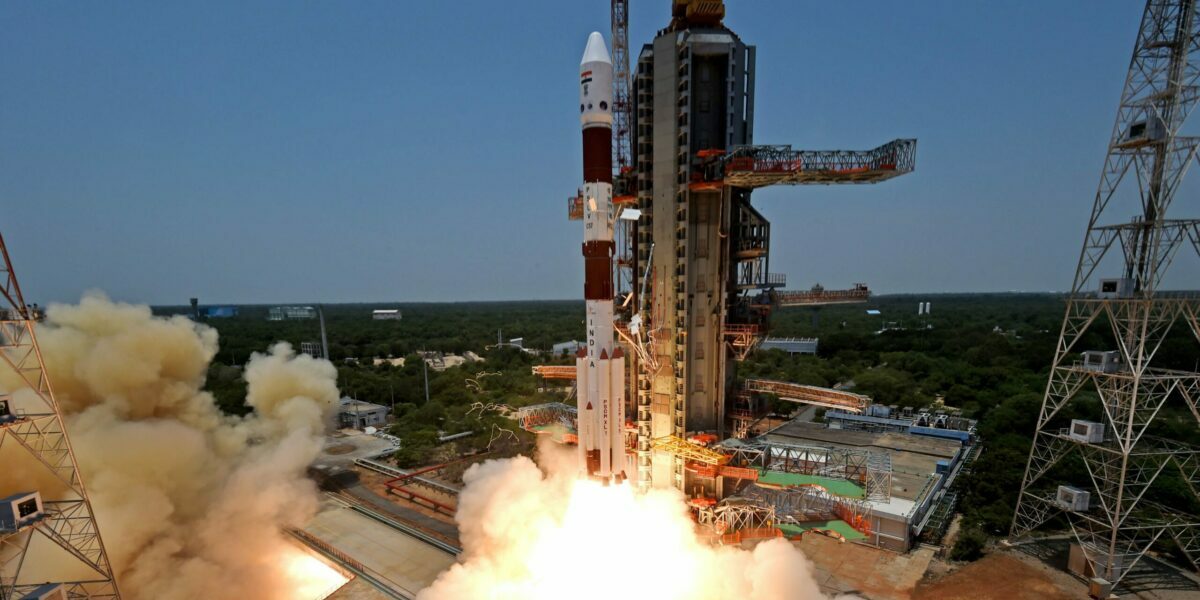According to ISRO, the instrument has successfully measured solar wind ions, primarily protons and alpha particles.

Aditya L1 was launched on 2 September from Satish Dhawan Space Centre at Sriharikota in Andhra Pradesh. (ISRO/X)
The Aditya Solar Wind Particle Experiment payload onboard India’s Aditya-L1 satellite has commenced its operations and is performing normally, ISRO said on Saturday, 2 December.
In a statement, ISRO said that the Aditya Solar wind Particle Experiment (ASPEX) comprises two cutting-edge instruments’ the Solar Wind Ion Spectrometer (SWIS) and the SupraThermal and Energetic Particle Spectrometer (STEPS).
The STEPS instrument was operational on 10 September 2023. The SWIS instrument was activated on 2 November 2023, and has exhibited optimal performance.
“SWIS, utilising two sensor units with a remarkable 360 field of view each, operates in planes perpendicular to one another,” the statement read.
Aditya-L1 Mission:
The Solar Wind Ion Spectrometer (SWIS), the second instrument in the Aditya Solar wind Particle Experiment (ASPEX) payload is operational.
The histogram illustrates the energy variations in proton and alpha particle counts captured by SWIS over 2-days.… pic.twitter.com/I5BRBgeYY5
— ISRO (@isro) December 2, 2023
According to ISRO, the instrument has successfully measured solar wind ions, primarily protons and alpha particles.
A sample energy histogram acquired from one of the sensors over two days in November 2023 illustrates variations in proton and alpha particle (doubly ionised helium, He2+) counts, the agency said.
“These variations were recorded with nominal integration time, providing a comprehensive snapshot of solar wind behaviour,” ISRO said.
The directional capabilities of SWIS enable precise measurements of solar wind protons and alphas, contributing significantly to addressing longstanding questions about solar wind properties, underlying processes, and their impact on Earth, the space agency explained.
“The change in the proton and alpha particle number ratio, as observed by SWIS, holds the potential to provide indirect information about the arrival of Coronal Mass Ejections (CMEs) at the Sun-Earth Lagrange Point L1,” ISRO said.
The enhanced alpha-to-proton ratio is often regarded as one of the sensitive markers of the passage of interplanetary coronal mass ejections (ICMEs) at the L1 and hence considered crucial for space weather studies.
Using the vantage point L1, four payloads directly view the Sun and the remaining three payloads carry out in situ studies of particles and fields at L1, thus providing important scientific studies of the propagation effects of solar dynamics in the interplanetary medium.
“The suits of Aditya L1 payloads are expected to provide the most crucial information to understand the problem of coronal heating, coronal mass ejection, pre-flare and flare activities, their characteristics, dynamics of space weather, propagation of particle and fields,” the ISRO said.
The seven payloads, or high-tech tools, Aditya takes to the space will help in learning more about the Sun and its behaviour.
ISRO’s Polar Satellite Launch Vehicle (PSLV-C57) on 2 September had successfully launched the Aditya-L1 spacecraft, from the second launch pad of Satish Dhawan Space Centre, Sriharikota.
Aditya-L1 is the first Indian space-based observatory to study the Sun from a halo orbit around the first Sun-earth Lagrangian point (L1), which is located roughly 1.5 million km from Earth.
Imagine a small object, like a satellite, that has to be put at a specific spot in space where it can stay balanced under the gravitational influence of two larger objects, like the Earth and the Sun. This spot is called a “Lagrangian point”.
There are five Lagrangian points — L1 to L5 — in the Earth-Sun system. They are named after mathematician Joseph-Louis Lagrange, who found these points.
L1 is located between the Earth and the Sun, a bit closer to the Sun and 1.5 million km from the Earth.
Aditya-L1 at L1 can continuously observe the Sun without being blocked by the Earth.
(With PTI inputs)

Jul 10, 2024

May 27, 2024

May 15, 2024

May 02, 2024

Apr 29, 2024

Apr 29, 2024